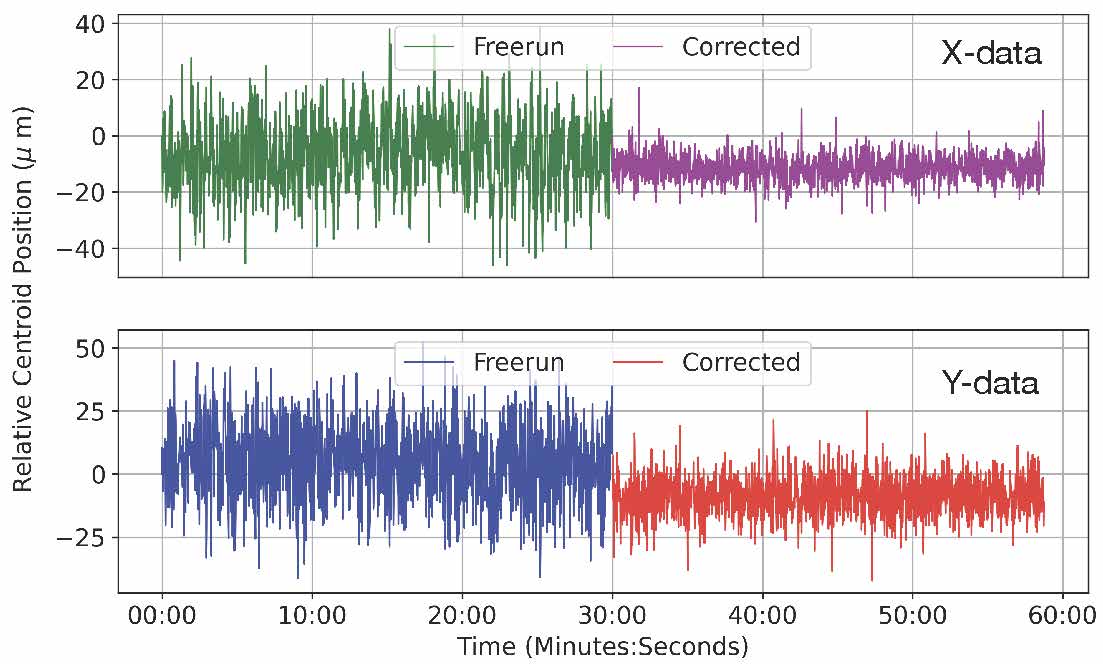Key Takeaways
- New research demonstrates the first successful application of machine learning-enabled predictive control for stabilizing a high-power, low-repetition-rate laser.
- The method can make real-time adjustments to minimize jitter by predicting laser-pointing errors, resulting in shot-to-shot stabilization.
- The work could lead to advancements in various scientific fields and industries, including improved laser-plasma acceleration, enhanced imaging techniques, and breakthroughs in fusion and medical treatments.
Researchers at the Department of Energy's Lawrence Berkeley National Laboratory (Berkeley Lab) have made a breakthrough in laser technology by using machine learning (ML) to help stabilize a high-power laser.
This advancement, spearheaded by Berkeley Lab's Accelerator Technology & Applied Physics (ATAP) and Engineering Divisions, promises to accelerate progress in physics, medicine, and energy. The researchers report their work in the journal High Power Laser Science and Engineering.
Predicting Jitter
High-power lasers have become essential tools in both scientific research and industry. One exciting application of these lasers is laser-plasma accelerators (LPAs), which can accelerate particles to high energies over short distances.
LPAs could offer more compact and cost-effective particle colliders and novel light sources, enabling the exploration of matter at atomic and molecular scales. High-power lasers also support advances in inertial fusion, which promises abundant, reliable energy.
However, fluctuations in beam pointing, known as "jitter," that are caused by mechanical vibrations, hinder the laser's performance and impede progress in these applications.
"Laser pointing errors are particularly problematic in LPAs as they cause instability in the generated electron beam, which limits their practical application," explained Dan Wang, a research scientist in ATAP's Berkeley Accelerator Controls & Instrumentation Program and one of the lead authors of the paper.
Traditional laser control systems, however, "struggle to keep up with the rapid changes in the laser's position, especially with the large slow-moving optical components used in high-power, low-repetition-rate lasers," according to Anthony Gonsalves, a staff scientist and associate deputy director for experiments at ATAP's BELLA Center and one of the paper's authors. "This results in shot-to-shot errors that adversely impact experiments."
To overcome this limitation, the team turned to machine learning.
Unlike traditional control systems that correct laser pointing errors after they occur, "our method predicts jitter and then makes real-time adjustments to the laser's optical components, rapidly improving shot-to-shot stabilization and more accurate beam pointing," explained Alessio Amodio, a BELLA Center and Engineering Division electronics engineer and one of the lead authors of the paper.
"Pilot" Beam and Real-Time Adjustments

Comparison of freerun and ML-corrected jitter over one hour (Credit: Dan Wang/Berkeley Lab)
To test the method's effectiveness, the researchers employed a low-power, high-repetition-rate "pilot" laser beam as a proxy for the high-power, low-repetition-rate main beam from the BELLA Petawatt laser, a leading LPA research facility.
"Because the pilot beam fires much more frequently than the main beam, we can map out the motion of the beam caused by vibration of the mirrors," said Gonsalves. "We can then use this information to predict where the beam will be when the high-power pulse arrives, and because we know the pointing error in advance, we can adjust a mirror to correct these errors."
They fed this positional data into their ML-enabled control system, which employed a correction mirror to adjust the beam's pointing. After testing its performance, the system achieved a 65% reduction in jitter in the beam's X-direction and 47% in the Y-direction.
"We plan to enhance our method using field-programmable gate arrays, electronic control circuits that offer advanced timing and synchronization, to enable faster and more accurate real-time corrections," said Wang. "This is expected to improve shot-to-shot laser stabilization, with testing planned on the BELLA Petawatt laser at full power and broad applications."
The Department of Energy's Office of Science, Office of High Energy Physics, and Berkeley Lab's Laboratory Directed Research and Development Program supported this research.






